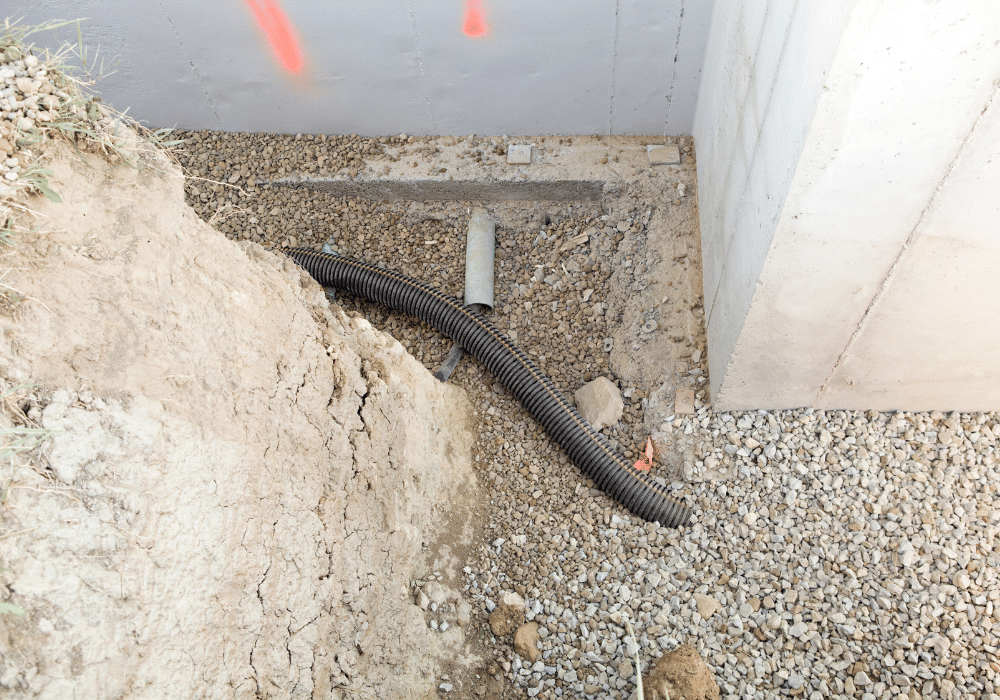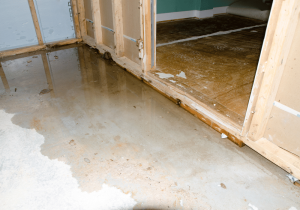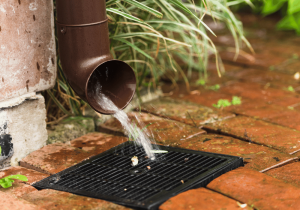How French Drains Can Protect Your Basement from Water Damage

Basement water problems are a common headache for homeowners, but they can lead to much more than just a minor inconvenience. Persistent water intrusion can weaken your home’s foundation, promote mould growth, and put your valuable belongings at risk. One highly effective solution to these issues is the installation of a French drain. Whether you’re looking to safeguard a finished basement or prevent flooding in an unfinished one, understanding the ins and outs of French drains is key to taking control of your home’s drainage system. This guide offers everything you need to know about French drains, including how they work, their benefits, and whether DIY installation or professional help is the best option for your situation.
Understanding Basement Water Problems
 Water damage in basements is often the result of poor drainage, faulty waterproofing, or high water tables. When water seeps into your basement, it’s often because the soil around your home becomes saturated. Excess water exerts hydrostatic pressure on your foundation walls, forcing water through cracks, joints, or porous materials. This infiltration can lead to persistent dampness or, worse, standing water.
Water damage in basements is often the result of poor drainage, faulty waterproofing, or high water tables. When water seeps into your basement, it’s often because the soil around your home becomes saturated. Excess water exerts hydrostatic pressure on your foundation walls, forcing water through cracks, joints, or porous materials. This infiltration can lead to persistent dampness or, worse, standing water.
Another common culprit is improper grading of the landscape around your home. If the ground slopes toward your house, rainwater and melting snow flow directly to your foundation rather than draining away. Similarly, clogged gutters or downspouts that don’t extend far enough from the foundation exacerbate water infiltration problems. Addressing these causes is essential to long-term basement protection, but some homes may require a more permanent drainage system for ongoing water management.
Left untreated, basement water issues can create a domino effect of problems. Mould and mildew thrive in damp environments, posing health hazards to your family. Additionally, repeated water exposure can undermine your home’s structural stability, leading to expensive foundation repairs. Fortunately, a French drain system provides an efficient way to protect your basement from these risks.
What is a French Drain System?
A French drain, contrary to its name, has nothing to do with France but everything to do with smart drainage solutions. It’s a type of trench drainage system designed to redirect water away from areas where it could cause damage. With its straightforward yet effective design, a French drain consists of a trench filled with gravel or rock and a perforated pipe that collects and redirects water.
The perforated pipe at the heart of the French drain allows water to enter and flow toward a designated discharge point, such as a storm drain, sump pump, or a low-lying part of your property. The gravel or rock surrounding the pipe aids in water filtration, preventing debris and sediment from clogging the system.
French drains are typically installed around the perimeter of a basement (known as internal French drains) or along the exterior foundation walls (external French drains). While internal systems manage water after it has entered your basement, external systems prevent water from reaching your foundation in the first place. By understanding these options, you can choose the right solution for your specific drainage needs.
The Benefits of French Drains for Basements
- Effective Water Redirection: The primary advantage of a French drain is its ability to move water away from your foundation quickly and efficiently. By relieving hydrostatic pressure, French drains reduce the likelihood of water seeping into your basement.
- Protection Against Long-Term Damage: Implementing a French drain minimizes the risks of structural damage caused by moisture accumulation. This is particularly important for preserving the longevity of your home’s foundation and maintaining property value.
- Healthier Indoor Environment: Eliminating excess moisture from your basement decreases the chances of mould and mildew growth. This leads to better indoor air quality and reduces health risks for your family.
- Versatility in Placement: French drains can be installed both inside and outside your home, adapting to your specific drainage needs. Internal drains are ideal for homes with water intrusion problems, while external drains serve as a preventative measure.
- Enhanced Property Value: A dry, well-maintained basement is a key selling point for potential buyers. Installing a French drain signals that your home is protected from water damage, making it more appealing on the real estate market.
How French Drains Work to Protect Basements
French drains create an efficient pathway for water to flow away from your foundation, mitigating several key risks. The perforated pipe within the trench collects water as it seeps through the soil. This water flows through the pipe and is discharged at a safe location, preventing it from pooling around your home.
The gravel surrounding the pipe plays a double role. First, it encourages quick drainage, allowing water to flow downward into the pipe instead of sitting on the soil’s surface. Second, it acts as a filtration system, blocking soil particles and debris from entering the pipe. This minimizes blockages and ensures your French drain remains highly effective over time.
By intercepting and redirecting water efficiently, French drains prevent the accumulation of hydrostatic pressure against your foundation walls. This reduction in pressure is critical for homes in areas with a high water table or regions prone to heavy rainfall. Additionally, French drains are particularly effective when paired with other drainage systems, such as sump pumps, offering a comprehensive solution to basement flooding.
French Drain Installation: A Step-by-Step Guide
Installing a French drain may seem straightforward, but it involves careful planning and precision for optimal functionality. Here’s how a typical installation process unfolds:
- Site Assessment and Planning: The first step is to identify areas prone to water accumulation, such as the perimeter of your basement foundation. Professionals analyze the landscape and water flow patterns to determine optimal drain placement.
- Excavation: A trench is dug to accommodate the French drain, ensuring it slopes downward toward the designated outlet. The angle of the slope is crucial to maintaining proper water flow.
- Lining and Base Layer: The trench is lined with landscape fabric, which prevents soil from clogging the gravel. A layer of coarse gravel is then added as the base.
- Pipe Placement: Next, the perforated pipe is placed within the trench, ensuring the perforations face downward. This allows water to enter the pipe and flow toward the outlet.
- Backfilling and Covering: Additional gravel covers the pipe, and the landscape fabric is folded over the gravel layer to keep dirt out. The trench is then backfilled with soil or decorative stones, concealing the system.
- Discharge Setup: The drain is connected to a sump pump, storm drain, or other water disposal system. Final adjustments are made to ensure smooth water flow.
With these steps carefully executed, your basement gains a reliable defence against water intrusion.
Maintaining Your French Drain for Long-Term Protection
 A French drain provides long-lasting protection, but regular maintenance ensures it continues to function effectively. Periodic inspections are essential to identify potential blockages or damage to the system. For example, over time, debris and sediment may accumulate in the perforated pipe, slowing water flow.
A French drain provides long-lasting protection, but regular maintenance ensures it continues to function effectively. Periodic inspections are essential to identify potential blockages or damage to the system. For example, over time, debris and sediment may accumulate in the perforated pipe, slowing water flow.
Cleaning the pipes and gravel regularly prevents clogs and ensures efficient drainage. Jetting systems or drain snakes are often used for this purpose. It’s also important to monitor the discharge point, ensuring it isn’t obstructed by dirt, leaves, or vegetation.
If your French drain includes a sump pump, routine maintenance of the pump itself is critical. Check that it operates correctly and remove any debris from the pump basin. Consider scheduling professional inspections annually to keep your drainage system performing at its best.
French drains are a simple yet powerful tool for managing basement water problems. By addressing water flow issues at their root, they provide comprehensive protection for your foundation, belongings, and indoor air quality. With the right installation and consistent maintenance, a French drain can keep your basement dry, safe, and comfortable for decades.
If you’re uncertain about the best drainage solution for your home, consulting with professionals like Ashworth Drainage can provide you with expert guidance and reliable installation services. Contact our team today to take the first step toward a permanently dry basement.
